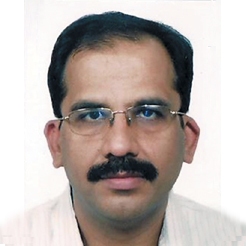Vinod Bhatia, Senior VP, Reliance Communications

Vinod Bhatia, Senior Vice President, Reliance Communications talks about the need for testing and measurement solutions . Excerpts…
How is the requirement for T&M solutions likely to change with the launch of 3G and Wi-Max services and the movement towards IP-based networks?
The requirement for T&M solutions will change dramatically. Smarter and more interlinked tools will come in. There will be greater focus on customer perception and experience. People will not opt for traditional equipment and solutions for measurement and testing. Traditional ways of using drive testing, post-processing, power meters, spectrum analysers and protocol analysers, etc. will disappear shortly. It will be replaced by smarter software-based advanced tools. Network systems and subsystems will upload all subscriber and network-related data to these advanced tools. Network-wide periodic drive testing will be progressively phased out and it will be carried out only in problematic spots based on the outcome of advanced tools. Remote performance management, intelligent corelation, geolocation, atomisation, in-building experience management and remote delivery will be the focus of all telecom operators in the time to come. This will significantly improve the service quality and customer experience. Thus, the overall environment will be completely different from what we had with 2G networks.
What is your current level of investment in this space? How is this likely to change in the foreseeable future?
Our overall investment in T&M is of the order of $25 million. The solutions we currently have are the ones we have accumulated over a period of time but now things will change dramatically. We would like to know where our subscriber is, how many of them are inside the building, what services they use, how is the RF environment when they use these services, where should the company deploy capex to get maximum returns, where would the company lose its roaming customer, where and why would the company have network problems like drop calls, how is the network performance by device type, etc. These things may not be a part of T&M per se, but it would be more focused towards advanced tools that have the capability to crunch data, analyse customer behaviour, understand customer requirements and improve user experience. Networks will evolve from the existing network-centric approach towards a customer-centric approach. Thus, user experience-centric tools will dominate the market.
What T&M solutions are currently being adopted by your company?
Currently, we are in a transition phase from conventional T&M solutions to advanced tools deployment. We are using a number of T&M solutions such as power sensors, power meters, spectrum analysers, advanced spectrum scanners, protocol analysers, multi-technology drive test kits, post-processing solutions, noise figure meters, handset testers and simulators. Apart from this, we have developed several tools based on our day-to-day needs. Now we are moving towards service assurance tools that are not only meant for troubleshooting but to capture customer experience, which will enable us to be more proactive than reactive.
What are some of the major challenges before your organisation in the adoption of these solutions?
Our organisation is focused towards innovation and improving customer satisfaction. Our key challenges are to meet this objective in a highly competitive and low-ARPU market. Creating returns on investment for these advanced tools is a challenge in itself due to the mass market, wide geography and huge number of low- ARPU subscribers. We have carried out a lot of trials and pilot projects to define our requirements and customisation based on our short- and long-term needs. Understanding customer behaviour in terms of usage pattern, applications and services is another challenge as it varies with multiple technologies.
What is your wish list from the vendors?
Vendors should have open architecture and allow easy integration with other tools and equipment. These requirements are well covered with the new technologies that we are deploying now. Some of the tools need customisation to suit Indian conditions. Vendors should have a short turnaround time to meet new technologies, applications and services that will be launched in the short- and mid-term time frames.
- Most Viewed
- Most Rated
- Most Shared
- Related Articles
- Solar Opportunity: Business case for the...
- Telecom Infrastructure in India: Anil Ta...
-
Sitapathy Chavali, Reliance Communicatio...

- Dr. Vikram Saksena, EVP & CTO, Tellabs
- The global surveillance market is experi...
- Understanding cloud telephony and the co...
- LTE offers comprehensive IP based teleco...
- 2014 promises to be another year of disr...
- Interview with Dr Lakshminath Dondeti, D...
- IT trends for 2014: John Michelsen, Chie...






